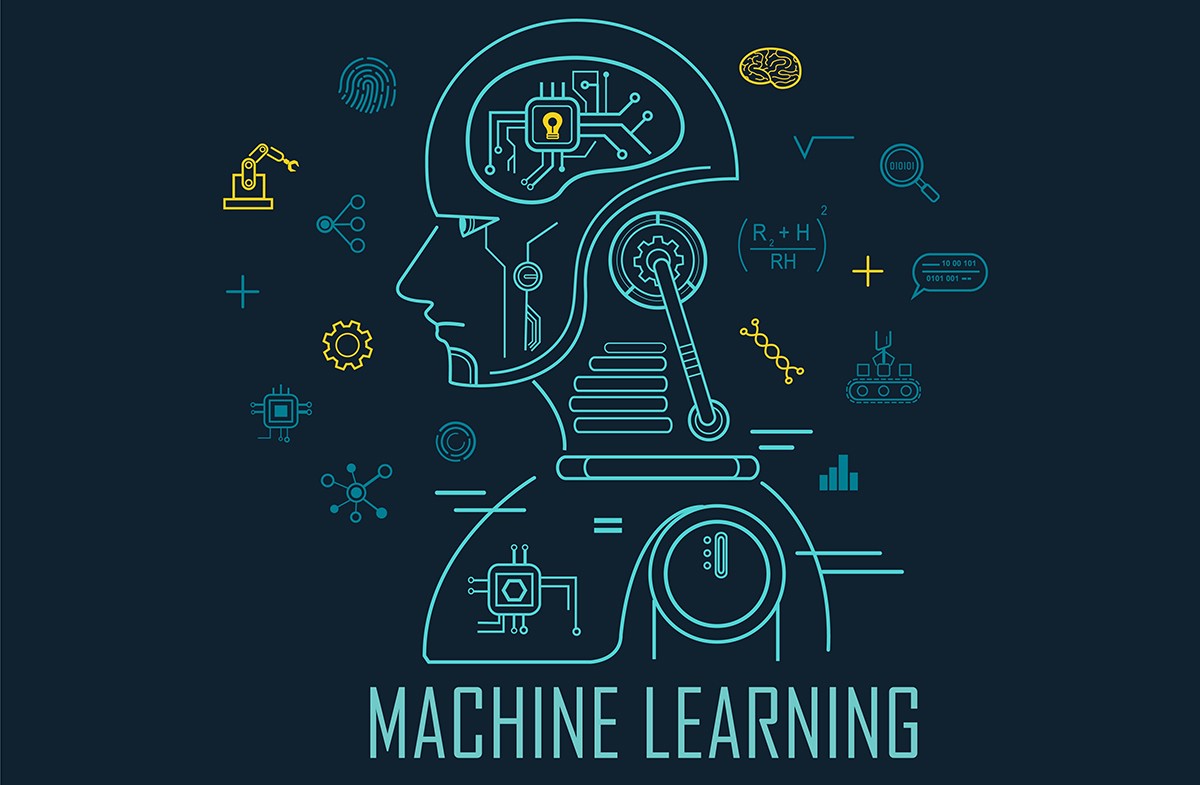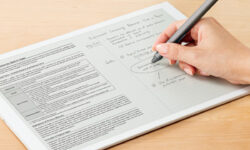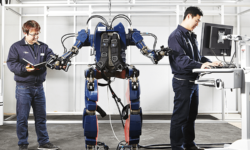Intelligence can be generally described as the ability to perceive information and retain it as knowledge to be applied towards adaptive behaviours within an environment or context.
Machine learning is the field of study that gives computers the capability to learn without being explicitly programmed, which is seen as a subset of artificial intelligence. It focuses on the development of computer programs that can access data and use it to learn for themselves.
The process of learning begins with observations or data, such as examples, direct experience, or instruction, to look for patterns in data and make better decisions in the future based on the examples that we provide. The primary aim is to allow the computers to learn automatically without human intervention or assistance and adjust actions accordingly. Machine learning algorithms build a mathematical model based on sample data, known as trading data.
BIOLOGICAL NEURAL NETWORKS OVERVIEW
The human brain is exceptionally complex and quite literally the most powerful computing machine known. The inner-workings of the human brain are often modeled around the concept of neurons and the networks of neurons known as biological neural networks. Simply a single neuron will pass a message to another neuron across this interface if the sum of weighted input signals from one or more neurons (summation) into it is great enough (exceeds a threshold) to cause the message transmission.
The ‘thinking’ or processing that our brain carries out and the subsequent instructions given to our muscles, organs, and body are the results of these neural networks in action. Also, the brain’s neural networks continuously change and update themselves in many ways, including modifications to the amount of weighting applied between neurons. This happens as a direct result of learning and experience.
Given this, it’s a natural assumption that for a computing machine to replicate the brain’s functionality and capabilities, including being ‘intelligent’, it must successfully implement a computer-based or artificial version of this network of neurons.
This is the genesis of the advanced statistical technique and term known as artificial neural networks.’
NEURAL NETWORK
Neural networks aren’t that complicated! The term “neural network” gets used as a buzzword a lot, but in reality, they’re often much simpler than people imagine. An artificial neural network learning algorithm is a computational learning system that uses a network of functions to understand and translate a data input of one form into the desired output, usually in another form. Neural networks are just one of many tools and approaches used in machine learning.

Machine learning algorithms that use neural networks generally do not need to be programmed with specific rules that define what to expect from the input. The neural net learning algorithm instead learns from processing many labeled examples that are supplied during training and using this answer key to learn what characteristics of the input are needed to construct the correct output. Once a sufficient number of examples have been processed, the neural network can begin to process new, unseen inputs and successfully return accurate results. The more examples and variety of inputs the program sees, the more accurate the results typically become because the program learns with experience.
This concept can best be understood with an example. Imagine the “simple” problem of trying to determine whether or not an image contains a cat. While this is rather easy for a human to figure out, it is much more difficult to train a computer to identify a cat in an image using classical methods. Considering the diverse possibilities of how a cat may look in a picture, writing code to account for every scenario is almost impossible. But using machine learning, and more specifically neural networks, the program can use a generalized approach to understanding the content in an image. Using several layers of functions to decompose the image into data points and information that a computer can use, the neural network can start to identify trends that exist across the many, many examples that it processes and classify images by their similarities.

PERCEPTRON
A Perceptron is an algorithm for supervised learning of binary classifiers. This means it helps to provide classified outcomes for computing. The perceptron is a mathematical model of a biological neuron. While in actual neurons the dendrite receives electrical signals from the axons of other neurons, in the perceptron these electrical signals are represented as numerical values.

There are two types of Supervised Learning techniques: Regression and Classification. Classification separates the data, Regression fits the data.
The perceptron learning algorithm is a linear classifier. If your data is separable by a hyperplane, then the perceptron will always converge. It will never converge if the data is not linearly separable.
A perceptron calculates the weighted sum of the input values. For simplicity, let us assume that there are two input values, x and y for a certain perceptron P. Let the weights for x and y be A and B respectively, the weighted sum could be represented as A x + B y.
Since the perceptron outputs a non-zero value only when the weighted sum exceeds a certain threshold C, one can write down the output of this perceptron as follows:
The output of P =
{1 if A x + By > C
{0 if A x + B y < = C
Recall that A x + By > C and A x + B y < C are the two regions on the XY plane separated by the line A x + B y + C = 0. If we consider the input (x, y) as a point on a plane, then the perceptron tells us which region on the plane to which this point belongs. Such regions, since they are separated by a single line, are called linearly separable regions.
CONVOLUTIONAL NEURAL NETWORK
A Convolutional Neural Network is a Deep Learning algorithm that can take in an input image, assign importance to various aspects/objects in the image, and be able to differentiate one from the other. The innovation of convolutional neural networks is the ability to automatically learn a large number of filters in parallel specific to a training dataset under the constraints of a specific predictive modeling problem, such as image classification. The result is highly specific features that can be detected anywhere on input images.
A convolutional neural network (CNN) uses perceptrons for supervised learning, to analyze data. CNN’s apply to image processing, natural language processing, and other kinds of cognitive tasks.
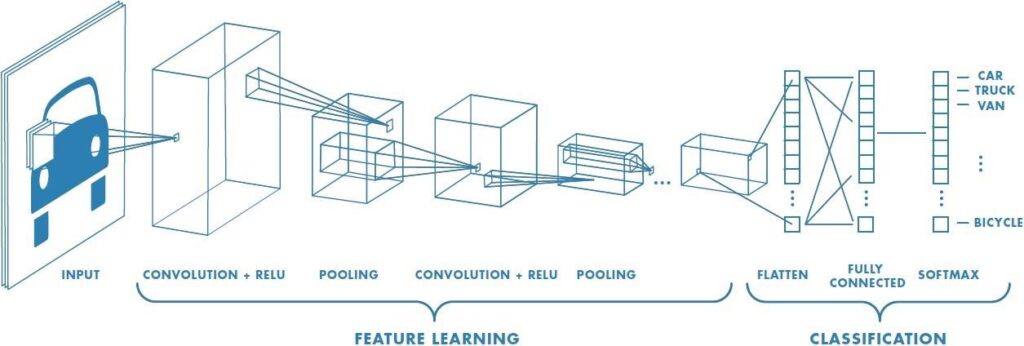
RECURRENT NEURAL NETWORK
Recurrent Neural Networks(RNN) are a type of neural network where the output from the previous steps are fed as input to the current step. In traditional neural networks, all the inputs and outputs are independent of each other, but in cases like when it is required to predict the next word of a sentence, the previous words are required and hence there is a need to remember the previous words.
RNN have a “memory” which remembers all information about what has been calculated. It uses the same parameters for each input as it performs the same task on all the inputs or hidden layers to produce the output. This reduces the complexity of parameters, unlike other neural networks.
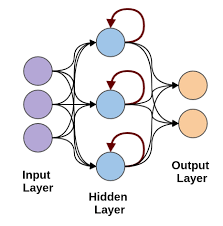
APPLICATIONS OF NEURAL NETWORKS
Engineering is where neural network applications are essential, particularly in the “high assurance systems that have emerged in various fields, including flight control, chemical engineering, power plants, automotive control, medical systems, and other systems that require autonomy.” Some commonly used areas of neural networks include:
Image compression – Neural networks can receive and process vast amounts of information at once, making them useful in image compression. With the Internet explosion and more sites using more images on their sites, using neural networks for image compression is worth a look.
Character recognition – The idea of character recognition has become very important as handheld devices like the Palm Pilot are becoming increasingly popular. Neural networks can be used to recognize handwritten characters.
Stock market prediction – The day-to-day business of the stock market is extremely complicated. Many factors weigh in whether a given stock will go up or down on any given day. Since neural networks can examine a lot of information quickly and sort it all out, they can be used to predict stock prices.
Traveling salesman’s problem – Interestingly enough, neural networks can solve the traveling salesman problem, but only to a certain degree of approximation.
Medicine, Electronic noise, Security and Loan applications- These are some applications that are in their proof-of-concept stage, except a neural network that will decide whether or not to grant a loan, something that has already been used more successfully than many humans.
Now, you know that Machine Learning is a technique of training machines to perform the activities a human brain can do, albeit a bit faster and better than an average human being. Today we have seen that machines can beat human champions in games such as Chess, AlphaGO, which are considered very complex. You have seen that machines can be trained to perform human activities in several areas and can aid humans in living better lives. Artificial neural networks (ANNs) and the more complex deep learning technique are some of the most capable AI tools for solving very complex problems and will continue to be developed and leveraged in the future.
While a terminator-like scenario is unlikely any time soon, the progression of artificial intelligence techniques and applications will certainly be very exciting to watch!

